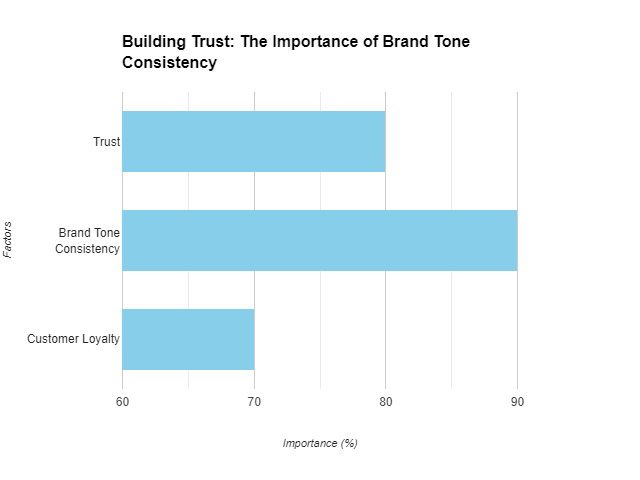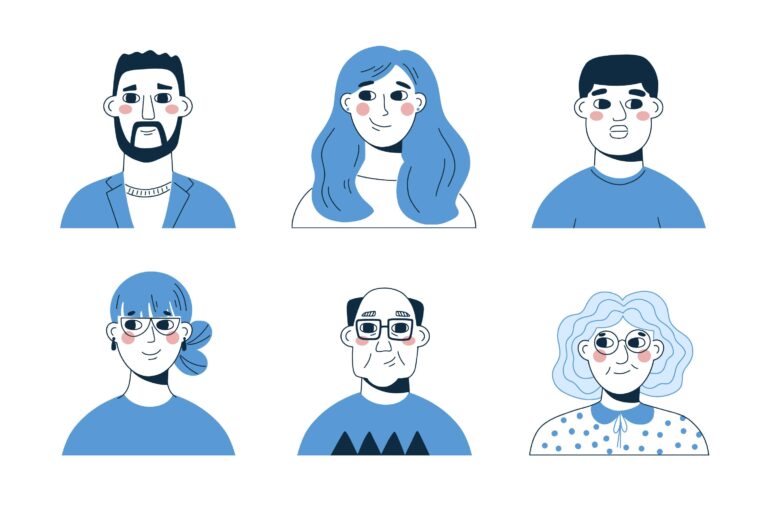How To Use Brand Tone To Build Relationships
When it comes to branding, people often think about those unique designs, colors and fonts. Just like all these, brand voice is also important.
Let’s take the case of Coca-Cola.
What if Coca-Cola lost its distinctive brand tone?
The impact would be a dull, lifeless brand personality. There would be no sense of joy, upliftment and youthful spirit that has defined Coke for generations.
Advertising and messaging would become serious, factual and generic – failing to capture the public’s imagination or make an emotional connection. The vibrant red packaging and branding would lose its passion and excitement.
Slogans would become functional instead of aspirational. Sponsorships and partnerships would not fit a colourful, spirited brand image.
Without its distinctive upbeat tone that transcends cultures worldwide, Coca-Cola would struggle to build lifelong customer relationships and risk fading into the background of the beverage landscape.
The brand’s soul lies in its tone – losing that would drain the color and magic from the Coca-Cola experience.
Your brand tone isn’t just words on a page; it’s the secret sauce that turns businesses into legends. Keep it real, stay consistent, connect with your audience, and watch your brand become the star”
Similarly, your brand’s personality is largely dependent on its brand voice. Whether you’re casual and playful or buttoned-up and professional, your brand tone shapes that.

How Does Brand Voice Help?
- Recognition: Consistent brand tone aids recognition. When Wendy’s speaks with its signature sassy, conversational tone, customers know who is speaking. The warm, helpful tone of Zappos builds trust.
- Builds Trust and Loyalty: Brand Tone also promotes loyalty by making an emotional impact. Outdoor outfitter REI touches customers with its tone of adventure and self-discovery. Brands need tone to turn basic messages into meaningful connections. An authentic, well-defined tone also builds credibility. Patagonia’s passionate, activist tone tells customers it is a mission-driven company. Brands that know who they are inspire trust.
- Helps to communicate your brand value: Additionally, the right tone helps audiences understand values. Johnson & Johnson’s caring, family-centered tone quickly conveys its priorities. Tone provides texture to a brand’s personality.
- Provides Consistency: Apple’s clean, simple tone aligns social media presence, product design, and ads seamlessly. The tone is crucial for cohesion.
- Helps in creating Organic Buzz: When new products get introduced, tone paves the way for organic buzz. MTV’s breaking-the-mold tone sparks interest in whatever’s next. Tone sets expectations fans anticipate.
- Humanizes faceless companies: Outdoor outfitter REI’s communal, eco-friendly tone says its values matter more than profits. The tone makes “brand speak” actually meaningful.
The Power of Tone for Relationship Building
Brand tone has the power to turn boring marketing messages into meaningful conversations that customers enjoy and remember. Consider these benefits:
- Tone creates emotional bonds so customers see the brand as an ally, not just a business transaction. This sense of affinity builds loyalty.
- Brand tone is not just about talking; it’s about making sure your message lands. When your brand tone is on point, your audience doesn’t just hear you; they get you.
- A familiar, friendly tone aids recognition across channels, with customers responding to the brand’s distinct vibe. The tone is a shortcut to trust.
- Tone allows flexibility to adjust messaging for different contexts while retaining brand identity. Customers appreciate personalized interactions.
- When tone aligns with a brand’s goals and values, it guides employees in presenting a unified brand image that consumers can rely on.
- Tone shapes the very experience of a brand in the customer’s mind. Is it serious or silly? Hip or traditional? Inclusive or exclusive? The tone leaves a lasting impression.
- Being heard is not enough. A unique brand tone is your playlist for standing out. It’s what makes people go, “Yeah, that’s my favorite!”
Some Data on Brand Tone
Statistics reveal just how critical brand tone is for forging real relationships:
- 90% of potential customers expect a similar brand experience across different platforms (Forbes)
- 63% of consumers are more likely to recommend a brand with a distinct and consistent voice. (Convince&Convert)
- Brands with distinct tones enjoy 28% higher revenue growth. (Convince&Convert)
- Companies with unified brand messaging see a 32% higher market share on average. (Forbes)
Real-World Examples
Let’s look at how specific brands effectively leverage tone:
- Nike’s tone is serious, grounded, and motivating – the tone of a coach pushing athletes to greatness. This aligns with their goal of inspiring athletic achievement.
- Patagonia’s passionate, authentic tone focused on environmental activism reflects its values and attracts like-minded customers.
Implementing and Evolving Your Brand Tone
Consistency is Key:
Once you find your tone, stick with it. Consistency is how your audience recognizes you in the crowded business world.
Adaptability: What was cool in the ’90s might not fly today. Be open to change, adapt with the times. It’s like upgrading your brand’s wardrobe – still you but more in tune with the current vibe.
Brand tone table
| Aspect | Description | Example |
|---|---|---|
| Brand | Name, industry, core values | Acme Toys, Toy Manufacturer, Playful, Innovative, Educational |
| Target Audience | Demographics, interests, needs, expectations | Parents of young children, Value quality and educational play |
| Desired Tone | Overall feeling, key adjectives | Friendly, Approachable, Enthusiastic, Informative, Helpful |
| Key Tone Attributes | Essential characteristics of the brand voice | Trustworthy, Reliable, Playful, Engaging, Informative |
| Do’s | Guidelines for using each tone attribute effectively | – Use clear and concise language |
| Don’ts | What to avoid in your messaging | – Use jargon or technical terms |
| Channel Adaptations | Adjustments to the tone for different channels | Website: Professional, informative, clear calls to action |
| Voice Examples | Real-world examples of the brand tone | Website: “Discover exciting toys that spark imagination!” |
Conclusion
A brand’s tone allows it to connect with audiences on a more relatable level. When unified across platforms, tone fosters familiarity and trust. With tone, boring marketing messages transform into authentic conversations.







